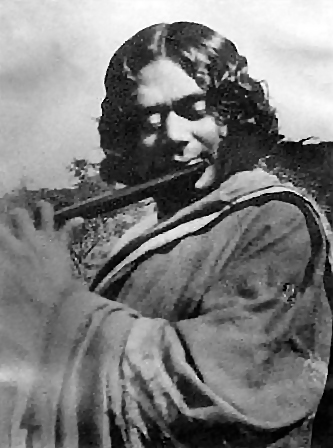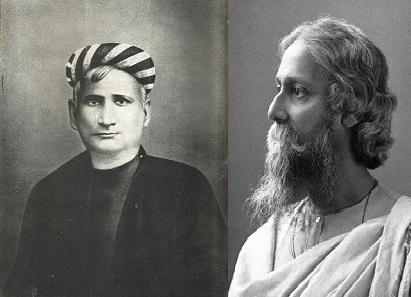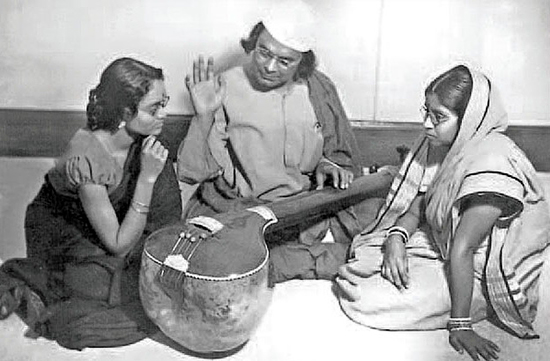|
List Of Works Of Kazi Nazrul Islam
This is a complete listing of the works by Kazi Nazrul Islam, in the Bengali language. Poetry *''Agnibeena'' (The Fiery Lute), 1922 *''Sanchita'' (Collected poems), 1925 *''Phanimanasa'' (The Cactus), 1927 *Chakrabak (The Flamingo), 1929 *Satbhai Champa (The Seven Brothers of Champa), juvenile poems, 1933 *Nirjhar (Fountain), 1939 *Natun Chand (The New Moon), 1939 *Morubhaskar (The Sun in the Desert), 1951 *Sanchayan (Collected Poems), 1955 *Nazrul Islam: Islami Kobita (A Collection of Islamic Poems; Dhaka, Bangladesh: Islamic Foundation, 1982) Poems and songs *Dolan Chapa (name of a faintly fragrant monsoon flower), 1923 *Bisher Bashi (The Poison Flute), 1924 *Bhangar Gan (The Song of Destruction), 1924 proscribe in 1924 *Chhayanat (The Raga of Chhayanat), 1925 *Chittanama (On Chittaranjan), 1925 *Samyabadi (The Proclaimer of Equality), 1926 *Puber Hawa (The Eastern Wind), 1926 *Sarbahara (The Proletariat), 1926 *Sindhu Hindol (The Undulation of the Sea), 1927 *Jinjir (Chain), ... [...More Info...] [...Related Items...] OR: [Wikipedia] [Google] [Baidu] [Amazon] |
Nazrul
Kazi Nazrul Islam (24 May 1899 – 29 August 1976) was a Bengali poet, short story writer, journalist, lyricist and musician. He is the national poet of Bangladesh. Nazrul produced a large body of poetry, music, messages, novels, and stories with themes, that included equality, justice, anti-imperialism, humanity, rebellion against oppression and religious devotion. Nazrul Islam's activism for political and social justice as well as writing a poem titled as "Bidrohī", meaning "the rebel" in Bengali, earned him the title of "Bidrohī Kôbi" (''Rebel Poet''). His compositions form the avant-garde music genre of Nazrul Gīti (''Music of Nazrul''). Born into a Bengali Muslim Kazi family from Churulia in Burdwan district in Bengal Presidency (now in West Bengal, India), Nazrul Islam received religious education and as a young man worked as a muezzin at a local mosque. He learned about poetry, drama, and literature while working with the rural theatrical group ''Leṭor Dôl'', ... [...More Info...] [...Related Items...] OR: [Wikipedia] [Google] [Baidu] [Amazon] |
Kazi Nazrul Islam
Kazi Nazrul Islam (24 May 1899 – 29 August 1976) was a Bengalis, Bengali poet, short story writer, journalist, lyricist and musician. He is the national poet of Bangladesh. Nazrul produced a List of works by Kazi Nazrul Islam, large body of poetry, music, messages, novels, and stories with themes, that included equality, justice, anti-imperialism, humanity, rebellion against oppression and religious devotion. Nazrul Islam's activism for political and social justice as well as writing a poem titled as "Bidrohī", meaning "the rebel" in Bengali, earned him the title of "Bidrohī Kôbi" (''Rebel Poet''). His compositions form the avant-garde music genre of Nazrul Geeti, Nazrul Gīti (''Music of Nazrul''). Born into a Bengali Muslim Qadi, Kazi family from Churulia in Bardhaman district, Burdwan district in Bengal Presidency (now in West Bengal, India), Nazrul Islam received religious education and as a young man worked as a muezzin at a local mosque. He learned about poetry, dra ... [...More Info...] [...Related Items...] OR: [Wikipedia] [Google] [Baidu] [Amazon] |
Bengali Language
Bengali, also known by its endonym and exonym, endonym Bangla (, , ), is an Indo-Aryan languages, Indo-Aryan language belonging to the Indo-Iranian languages, Indo-Iranian branch of the Indo-European languages, Indo-European language family. It is native to the Bengal region (Bangladesh, India's West Bengal and Tripura) of South Asia. With over 242 million native speakers and another 43 million as second language speakers as of 2025, Bengali is the List of languages by number of native speakers, sixth most spoken native language and the List of languages by total number of speakers, seventh most spoken language by the total number of speakers in the world. Bengali is the Official language, official, National language, national, and most widely spoken language of Bangladesh, with 98% of Bangladeshis using Bengali as their first language. It is the second-most widely spoken scheduled languages of India, language in India. It is the official language of the Indian states of West ... [...More Info...] [...Related Items...] OR: [Wikipedia] [Google] [Baidu] [Amazon] |
Agnibeena
''Agnibeena'' () is the first poetry book written by Kazi Nazrul Islam, one of the most famous Bengali poets of the first half of the twentieth century. It was published in the month of Kartik, the Bengali year 1329 (October 1922). There are twelve poems in this book. List of poems Agnibeena contains a preface where Nazrul dedicated the book to Barindra Kumar Ghosh and 12 poems. The most famous poem of this book is " Bidrohi". * "Pralayollas Pralayollas (, ''The Ecstasy of Destruction'' or ''Destructive Euphoria''), also known after its first line as ''Tora sab jayadbhani kar'', is a popular revolutionary Bengali song set to Dadra Tala, whose lyrics and tune were written by nation ..." * " Bidrohi" * "Raktambor-Dharini Ma" * "Agamoni" * "Dhumketu" * "Kamal Pasha" * "Anwar" * "Ranobheri" * "Shat-el-Arab" * "Kheyaparer Taroni" * "Qurbani" * "Muharram" References {{Kazi Nazrul Islam Works by Kazi Nazrul Islam 1922 poetry books Bengali poetry ... [...More Info...] [...Related Items...] OR: [Wikipedia] [Google] [Baidu] [Amazon] |
Shiulimala
''Shiulimala'' (''a garland of shiuli'') (1931) is a book of short stories, written by Kazi Nazrul Islam. This book contains four stories. The stories contained in the volume are: Padmagokhra, Shiulimala, Ognigiri, Jiner Badsha. These stories are erotic Eroticism () is a quality that causes sexual feelings, as well as a philosophical contemplation concerning the aesthetics of sexual desire, sensuality, and romantic love. That quality may be found in any form of artwork, including painting, sculp ....An important discussion hold on Nazrul short story in Department of Bengali , Govt Rajendra college ,Faridpur Date : 5-11-2014 Here we find romantic Nazrul. However, Nazrul made great contributions in Bengali. References . Bengali-language literature 1931 short story collections Erotic short stories Works by Kazi Nazrul Islam {{1930s-story-collection-stub ... [...More Info...] [...Related Items...] OR: [Wikipedia] [Google] [Baidu] [Amazon] |
Mrityukshuda
''Mrityukshuda'' (''Hunger for Death'') (1930) is a Bengali novel by Kazi Nazrul Islam. It is one of only three novels written by him. The author saw the Bolshevik revolution The October Revolution, also known as the Great October Socialist Revolution (in Soviet historiography), October coup, Bolshevik coup, or Bolshevik revolution, was the second of two revolutions in Russia in 1917. It was led by Vladimir L ... in Russia, with its unapologetic enthusiasm for science and rationalism, as well as the possibilities it seemed to open up for normal, everyday people to create social justice and development for themselves, as profoundly attractive; the depiction of Ansar, a character in the novel, is a reflection of that. The novel has 28 parts.Mrityukshudha, Published from Meghdut prokashoni 1st publish Ekushe Boimela 2004 Ansar and Pakale are the main characters. References Novels about poverty 1930 novels Bengali-language novels Bangladeshi novels Works by Kazi N ... [...More Info...] [...Related Items...] OR: [Wikipedia] [Google] [Baidu] [Amazon] |
Bengali Poetry
Bengali poetry is a rich tradition of poetry in the Bengali language and has many different forms. Originating in Bengal, the history of Bengali poetry underwent three successive stages of development: poetry of the early age (like '' Charyapad''), the Medieval period and the age of modern poetry. All ages have seen different forms of poetry and poetical tradition. It reached the pinnacle during the Bengali Renaissance period although it has a rich tradition and has grown independent of the movement. Major Bengali Poets throughout the ages are Chandidas, Krittivas Ojha, Maladhar Basu, Bijay Gupta, Mukundaram Chakrabarti, Kashiram Das, Alaol, Syed Sultan, Ramprasad Sen, Michael Madhusudan Dutt, Nabinchandra Sen, Rabindranath Tagore, Dwijendralal Ray, Satyendranath Dutta, Kazi Nazrul Islam, Jibanananda Das, Jasimuddin, Sukanta Battacharya, Al Mahmud, Joy Goswami. Introduction Poetry in the colloquial dialect of Bengal first originated from Prakrit, and based ... [...More Info...] [...Related Items...] OR: [Wikipedia] [Google] [Baidu] [Amazon] |
Bengali-language Literature
Bengali, also known by its endonym Bangla (, , ), is an Indo-Aryan language belonging to the Indo-Iranian branch of the Indo-European language family. It is native to the Bengal region (Bangladesh, India's West Bengal and Tripura) of South Asia. With over 242 million native speakers and another 43 million as second language speakers as of 2025, Bengali is the sixth most spoken native language and the seventh most spoken language by the total number of speakers in the world. Bengali is the official, national, and most widely spoken language of Bangladesh, with 98% of Bangladeshis using Bengali as their first language. It is the second-most widely spoken language in India. It is the official language of the Indian states of West Bengal, Tripura and the Barak Valley region of the state of Assam. It is also the second official language of the Indian state of Jharkhand since September 2011. It is the most widely spoken language in the Andaman and Nicobar Islands in the Bay ... [...More Info...] [...Related Items...] OR: [Wikipedia] [Google] [Baidu] [Amazon] |
Bengali Music
Bengali music () comprises a long tradition of religious and secular song-writing over a period of almost a millennium. Composed with lyrics in the Bengali language, Bengali music spans a wide variety of styles. History The earliest music in Bengal was influenced by Sanskrit chants, and evolved under the influence of Vaishnav poetry such as the 13th-century '' Gitagovindam'' by Jayadeva, whose work continues to be sung in many eastern Hindu temples. The Middle Ages saw a mixture of Hindu and Islamic trends when the musical tradition was formalized under the patronage of Sultan and Nawabs and the powerful landlords '' baro bhuiyans''. The earliest record of Sufism in Bengal goes back to 11th century AD in connection with the continuation of Sufism in northern India. Shah Sultan Rumi was the first Sufi to come to Bengal, when he came to Mymensingh in 1053 AD.Sufism not only helped in the spread of Islam in Bengal, but also contributed to the eventual creation of a Musli ... [...More Info...] [...Related Items...] OR: [Wikipedia] [Google] [Baidu] [Amazon] |




